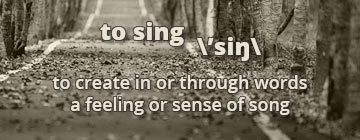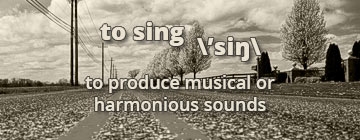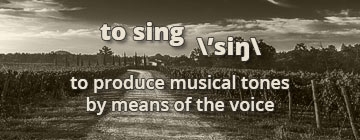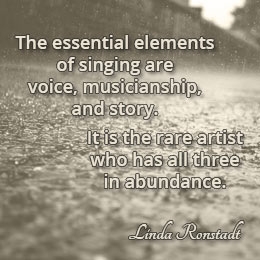Background
Song Forms and Storytelling
When we analyze the structure of a song in popular music we will discover that there are specific structural elements comparable to building blocks which make up the song. We refer to these structures as formal sections, or parts.
In our article "Anatomy of a Song" we explain what kind of formal sections exist in popular and traditional music, what these structural elements contain, and how they are placed in relation to other structural elements.
Songwriters and composers layout their compositions by arranging formal sections to build a musical vehicle that tells the story the song is about. The way the alignment of these sections build the structure or architecture of the resulting song is called song form. This layout is usually documented with the help of capitalized letters which represent the different sections of the song. However, the letters are freely assigned, there is no common standard assigning a specific letter to a particular section.
In popular music there are only a limited number of layouts which in variations find recurring use. Using one layout or another can be understood as a recipe for a different kind of story telling.
What kind of song forms exist?
- Strophic Form
- Verse/Bridge Form
- Verse/Chorus Form
- Verse/Chorus/Bridge Form
- Rondo Form
- Through Composed Form
- Compound or Hybrid Form
^ Strophic Form
The strophic song form, also referred to as one-part form, finds its use largely in folk music, hymns, musicals, and occasionally in country music. Songs in this form are constructed out of multiple verses, which first introduce the topic in a preamble and then advance the story of the song. Popular is the shorter "AAA" form with three verses, and the extended "AAAAA" form with five verses.
While lyrically different, musically the same melody is repeated over the full length of the song. Sometimes a refrain is woven into the lyrics, which oftentimes will be situated at the end of each verse by placing a repeated phrase into the last line. However, no significant change of melody will set the refrain apart.
Listen to the following example "Bridge Over Troubled Water" by "Simon & Garfunkel". Here three verses make up the complete song.
Example for the Strophic Song Form.
Verse Structures
A verse in general can have a structure of its own. A famous example is the 12-bar blues (AAB pattern), where the verse is constructed of a 4 bar long melody that is repeated, and a 4 bar long refrain which in this concept is used as a response to the previous pattern. Lyrically the previous pattern sets a question or a comment on any statement, while the hook in the refrain may give an answer.
^ Verse/Bridge Form
The verse/bridge song form, sometimes also referred to as thirty-two bar form for songs that were structured from sections with 8 bars length, became most common in American popular music during the early half of the 20th century, and is common today in pop, gospel and jazz among other styles.
Songs written in this form begin with two verses, followed by a bridge and the final verse (AABA). Every section is usually kept in a length of 8 bars. Like with the strophic song form a refrain can and is most often woven into the lyrics, placed as a repeated phrase into the last line of each verse without changing up the melody.
When writing lyrics the different sections are oftentimes considered to deliver a structure describing the "beginning" (A), the "now" (A), the "what if?" (B), and the "down the road" (A), while the repeating refrain delivers the theme or topic of the song.
Sometimes songs in the verse/bridge form are extended with an additional bridge and verse (AABABA). The second bridge can lyrically be either the same or different than the first bridge, or it can be used as an instrumental section. The final verse in this song form may either be a repeat of a previous verse, or may hold a new, completing aspect of the story.
Listen to the following example "Just the Way You Are" by "Billy Joel". This song makes use of the verse/bridge song form (AABA) without a refrain, and with verses that are double as long as the bridge. In the last verse an additional instrumental is woven in extending this section by another 16 bars.
Example for the Verse/Bridge Song Form.
^ Verse/Chorus Form
The verse/chorus song form is frequently used in modern popular music, with genres reaching from country, rock, hip hop, dance, to folk music. The form describes a concept where two different sections (verse and chorus) are used in different frequency and occurrence as building blocks to construct a song.
Songs that are using this form set the scene in the opening verse. In general verses carry the story forward and the chorus contains the main theme. It is to be desired to lead quickly to the theme. A verse has usually 8 lines with the last line leading to the chorus, and the chorus is often repeated multiple times. A chorus should contrast with the verse, should be memorable, and usually contains the song title.
There are many different possibilities of how to construct a song in verse/chorus form. In the simplest way the composer could arrange multiple "AB"-sections behind each other (ABABAB), or he could repeat the chorus (ABABB). He also could use an extra verse to introduce the story (AABABB), and he could cut a verse or chorus in half to create momentum.
Listen to the following example "Shake, Rattle, & Roll" by "Big Joe Turner". This song is constructed of a verse followed by a chorus, followed by a verse, followed by a chorus.
Example for the Verse/Chorus Song Form.
^ Verse/Chorus/Bridge Form
The verse/chorus/bridge song form, sometimes referred to as ABC form, is an extension of the verse/chorus form and used in modern popular music since the 1960s. It makes use of a third formal section, the bridge that is also referred to as release and middle-eight. From a lyrical point of view the bridge is used to ask the question "but what if?" or similar, with the purpose to give the story a new aspect, and to break the otherwise predictable repeating pattern of a verse/chorus structure.
A popular song structure within this form is ABABCB, which stands for "verse/chorus/verse/chorus/bridge/chorus". Here the first verse will set the theme of the song, using the last line to progress into the chorus which holds the main message. The next verse progresses the story, and the bridge is used to give a new aspect to the story.
The bridge is usually kept shorter then the verse, and should differ both, musically and lyrically. Verses are oftentimes kept 4, 8, 12, 16, or 24 lines long. Songs written in the ABC form may easily add on length, which stands in contrast with commercially viable songs and demand consideration during the writing process.
Listen to the following example "Fix You" by "Coldplay". Here an additional verse is used to introduce the topic, leading to a song structure of AABABCB.
Example for the Verse/Chorus/Bridge Song Form.
^ Rondo Form
The rondo song form is a song construction concept that has been particularly popular during the last half of the 18th and the early 19th centuries. Today we can find its use mostly in symphonic music and western swing, and sometimes we will find the basic idea of the concept in dance music.
Songs that are using the rondo form are constructed of two elements, the theme (or refrain) and the episode. The theme will contain the main melody of the song, and is usually placed at the beginning of the song functioning as a musical introduction. While interrupted by contrasting episodes which differ from the theme in melody, musical character, or tonal centre, the song will always return to the theme as a subsequent restatement of the melody.
In the classical rondo form the episodes all differ from each other, while the theme will most often be played in the same key. A popular structure for the classical form is ABACADA, with "A" being the theme often held in a length of 8 or 16 bars and with "B", "C", and "D" being episodes. There is also a shorter version called the five-part with a structure of ABACA.
Other structures allow the repeating of episodes, which may be layouted in a symmetrical way. An example here is the seven-part with a structure of ABACABA. If the "C"-section is extended, and the following "AB"-section remains in the principal key of the theme we speak of the sonata rondo form.
Listen to the following example "Every Breath You Take" by "The Police". Here the structure of the song can be documented as ABACBA between introduction and outro. Note that the "C"-section has been extended.
Example for the Rondo Song Form.
^ Through Composed Form
The through composed song form describes music that does not make use of repetition or does not return to a specific musical theme. Instead the music will change continuously throughout the song. The form is often used in classical music, operas, musicals, and in progressive rock.
Here every section of the composition is used to progress the story and no melodies or sections are repeated without undergoing significant change. Beside melody, the sections in the through composed song form can vary in any other aspect, like per example in length, time signature, tempo, harmony, or lyrics.
Early through composed music in the 19th century made use of lyrics that were organized in strophic form with the difference that the musical accompaniment or sung melodies were newly invented for each verse. This concept also found use in experimental rock in the 60s, and was developed further by adding elements to the music which represented the idea of a musical theme or specific sound.
A few years later the forerunners of progressive rock structured their songs by adding structural section groups, each of these containing shared musical characteristics that only find its existence within their section group. These section groups are sometimes set apart from each other with use of a pause to allow for a new beginning.
A possibility to document the song structure of a through composed song is to give each section an own letter (per example ABCD), or to give sections within one section group a count (per example A'A''B'B'').
Listen to the following example "This is Hardcore" by "Pulp". The structure of this composition consists of 8 non-repetitive sections, some of which share a common musical theme. The different structural parts are woven together resulting in a continues flow of music and story.
Example for the Through Composed Song Form.
^ Compound or Hybrid Form
The compound song form, also referred to as hybrid song form, combines two or more song form concepts by blending these together into one musical piece. This song form is commonly used in rock music among other genres.
The composer constructs a song in compound form by replacing a single section of one song form with a complete structural element of another song form. A simple example is to take the first verse of a verse/bridge form (AABA) and to replace it with a verse/chorus form (AB), resulting in a new structure ACAABA. Here the letter "C" indicates the chorus originating from the verse/chorus form. On a higher level the process could be repeated a number of times.
As one can imagine the possibilities for the songwriter to form new and interesting song structures become massive, and allow for experimentation and adventure.
Within the last three decades or so a number of rather new song forms are gaining more popularity, especially in rock and alternative music. In our opinion the structures of these song forms are derived with help of the compound song form.
- verse/pre-chorus/chorus/verse/pre-chorus/chorus
(A-CB-A-CB derived from AB-AB) - verse/pre-chorus/chorus/verse/pre-chorus/chorus/bridge/chorus
(A-DB-A-DB-CB derived from AB-AB-CB) - verse/pre-chorus/chorus/verse/pre-chorus/chorus/bridge/pre-chorus/chorus
(A-DB-A-DB-A-DB derived from AB-AB-CB)
Listen to the following example "Back In Black" by "AC/DC". Here a verse/chorus/bridge song form is infused with a second verse/chorus form changing the original structure from AB-AB-AB-CB to the more complex A-DB-A-DB-AB-CB. The letter "D" indicates the pre-chorus, which originates from the verse of the infused verse/chorus song form.
Example for the Compound or Hybrid Song Form.














